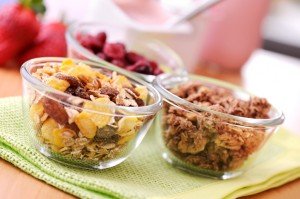
Not All Whole Grains Are Created Equal
Which would you choose: washed out white bread or brownish golden whole grain bread? And more important, why? You may be part of the 72% and 73% of American who consume more fiber and whole grains respectivelyaccording tothe 2010 Food & Health Surveyby the International Food Information Councilin the pursuit of satiety and weight loss and/or cholesterol reduction. But do get what you think from this dietary move?
The question is particularly relevant, when you consider 47% of people who eat whole grains rely on bread to fill their fiber needs, according to consumer research. And while numerous studies show fiber plays an important role to get the weight loss and other benefits of whole grains, not all whole grain food products guarantee a good amount of fiber, nor do all fiber sources (processed or natural) provide the same benefits.
Whole Grain and Fiber Are Not Equal
Whole-grain has been added to many food products labelsfrom baby soup and salads to side dishes and chips. However, a look at 72 nationally distributed ready-to-eat cereals with front package whole grain claims found thatthe fiber content varied considerably ranging from 0 to 11 g per serving, according to the recent article The Fiber Deficit, Part II: Consumer Misperceptions About Whole Grains and Fiber inNutrition Today.
Indeed, nearly one-half (32) contained less than the minimum amount of fiber to be labeled as a good source of fiber3 g or more. Likewise, out of 46 cereal-granola bars with whole grain claims, only 7 contained the minimum amount of fiber to be labeled as good source of fiber.
Bottom-line:Buy only food products that claim 100% whole grain or X g of whole grains.Do not trust marketing phrases, such as rich in, good, or excellent source of fiber.
Overall, a good source of fiber provides at least 3 g or more. So to bulk up your fiber intakewhich is below the recommended intake for adults13.8 g actual versus the recommended 25 g for women and 38 g for menswitch to cereal with 6 g of fiber per serving, 100% whole wheat bread for a sandwich, and popcorn instead of chips. These three small changes can add 10 g of fiber to your daily diet.
Natural versusFakeFiber
While not all fiber foods have the same amount, nor do they all provide the same health benefits. Joannne Slavin, Ph.D., registered dietitian and professor of Food Science and Nutrition at the University of Minnesota, has conducted several studies on fiber, and has found thatnot all the processed fiber added to food products, such as bars, cookies, muffins, etc., may provide the satiety effect so highly claimed.
In fact, when people eat the same muffin, but with different types of fiber added like resistant starch, polydextrose, or beta-glucan, just the resistant starch showed some satiety effect. Need more convincing? When Slavin compared two chocolate crisp bars with two processed fibersinulin and soluble corn fiberto a bar with no added fiber there was no difference in satiety.
Bottom-line:Go for natural food sources of fiber, such as legumes, beans, popcorn, almonds, pecans, walnuts, oatmeal, baked potato with the skin, berries, and apples with the skin, to get at least 14 g of fiber per 1,000 calories consumed, says Cheryl Kapalka, MPH, RD, CNSC, CDE, Clinical Nutrition Manager, Valley Hospital Medical Center in Las Vegas.
Liquid or Solid?
Imagine this scenario: you have a liquid breakfast that consists of a popular commercially available fruit juice and milkor oatmeal topped with blueberries, bite-sized apple slices, and brown sugar. Both provide the same amount of calories and fiber: 410 Kcal and 10 g. Which one should you choose?
In a study published inAppetite, in which subjects were tested on these two breakfast options,the solid meal naturally rich in fiber (oatmeal and whole fruits) decreased gastric emptying time and decreased hunger more than the liquid meal with added fiber.
Bottom-line:If your goal is to curb hunger and control appetite with fiber then solid food may be your best option.
